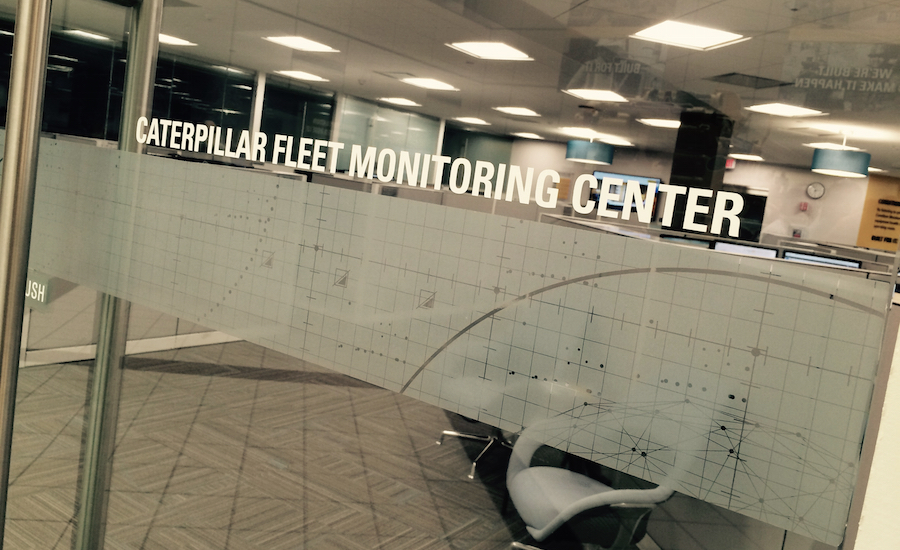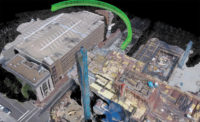A dramatic rise in technology that is making machinery, trucks and tools more digitally connected—at a time when operating a fleet of machines is becoming more expensive—was a recurring theme in ENR's news coverage this year.
Economics are partly driving this change. Operating a fleet of machinery is capital intensive, and significant price inflation for machinery has set in, as ENR has recently reported. “I believe a shift in machinery ownership is taking place, especially in the U.S.—a shift that will become permanent,” says industry analyst Frank Manfredi in his eponymous firm’s latest newsletter, Machinery Outlook, which discusses the rise of the sharing economy in the world of big iron.
“I believe those days are gone when contractors look fondly out their office window at their equipment fleet and refer to the fleet as their retirement plan,” Manfredi comments. “The uncertain economy, high cost of machinery and maintenance costs, and wildly fluctuating residual values all add up to make equipment-fleet ownership risky.”
Rental companies have enjoyed increasing market share since the downturn as contractors have purchased less fleet in favor of renting and leasing more. The rental revenue often comes at the expense of manufacturers and their dealers, but rental companies still must take on massive debt in order to stay competitive. Manfredi estimates that rental companies carry $2 in debt for every $1 they generate in sales, roughly twice the amount of debt that manufacturers and dealers need to operate.
As manufacturers and dealers look to compete more with rental companies by operating rental fleets or subsidizing them, they will require more capital. And that’s where digital connectivity, mobility and the sharing economy suddenly become useful. Companies that have more data on fleet utilization can make wiser decisions and larger profits.
Telematics capability is available on most new construction machines and gives users the ability to see deeply into utilization trends and even predict downtime before it happens. Caterpillar’s investment this past year in Chicago-based Uptake aims to help the manufacturer gain more visibility into how its machines are used in the field so it can drive more revenue back into the business. In Peoria, Ill., Cat has set up a fleet-monitoring center that acts as the central nervous system of its big-data operation, and it hopes to mesh augmented reality in the field to help diagnose problems and get parts to users faster.
Caterpillar also broadened its investment in online secondary markets with the merger of its Cat Auction Services division with the online equipment store IronPlanet.com. The April merger has resulted in joint auctions advertised on the Iron Planet site, but the real value may be in giving Caterpillar greater access to buyers looking to get heavy equipment on the cheap due to worries over long-term value.
Fuel-savings rebate programs are proving to be a useful way to get equipment owners to sign up for telematics coverage. Caterpillar’s “Cat Pays You Back” program was first announced in 2014 but saw a huge uptick in signups through 2015. Under the terms of the offer, Caterpillar tracks the fuel usage of its new machines in the field through its VisionLink telematics system, and if users burn more diesel than Cat predicts, they get paid the difference in credit for Caterpillar parts, repairs or rental.
“The backbone of this program is all the data [that] comes off the machine through ProductLink and VisionLink” says Jason Hurdis, Caterpillar senior marketing manager. “When we first started this program [in early 2015] we had a 72% connectivity rate, we are now at 93%.” According to Hurdis, 32% of the machines enrolled in the rebate program are on track to receive payments, which Cat will begin to distribute in the new year.
Other manufacturers are also offering their own fuel-usage rebate programs to boost adoption of telematics reporting, such as Volvo’s Fuel Efficiency Guarantee, Deere’s WorkSight Fuel Advantage and Hitachi’s Fuel Advantage. Caterpillar recently announced that it will be extending eligibility for its own program through June 2016, instead of the end of 2015.
“A lot of people say to me, ‘Diesel is $2 a gallon—Who cares?’” says Hurdis. “But with the response that we’ve seen, we can tell that fuel is still important to our customers. Is fuel $2 a gallon right now? Sure, but it’s not going to be that way forever.”
Likewise, the economics of operating equipment and increased connectivity are giving to rise peer-to-peer rentals, or the ability for contractors to bypass traditional channels and rent idle equipment to each other. Companies like Uber, Airbnb and Lyft exist because of the convergence of similar economic and technology trends. Caterpillar’s investment in San Francisco-based YardClub, a peer-to-peer rental service, is one indicator that manufacturers are interested in taking advantage of the sharing economy. Other companies, such as Getable and EquipmentShare, are examples of other nimble start-ups competing in the equipment rental business.
Manfredi estimates that the U.S. population of construction machines is about 3 million units, but only about one-third of the total fleet is in operating at any given time. Increased use of peer-to-peer services will put added pressure on manufacturers and dealers.
“As the millennial generation moves into management positions, their use of the sharing economy will greatly affect the equipment industry,” he says.






Post a comment to this article
Report Abusive Comment